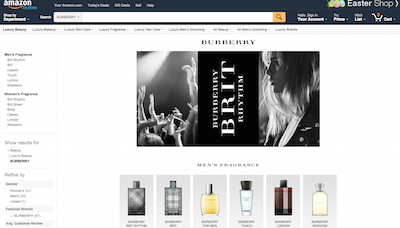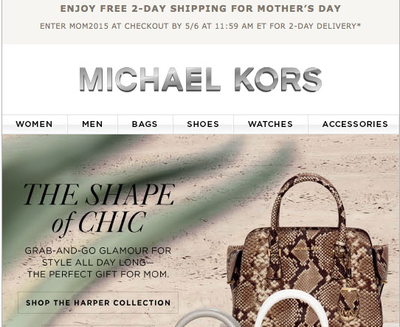 Longchamp Le Pliage customization promotional image
Longchamp Le Pliage customization promotional image
The barriers to high-level personalization are daunting, but retailers know that the land of relevance is where ROI salvation lies, according to a new report by L2 and Monetate.
Excellent customization entails translating the knowledge and adaptability of a personal shopper to the digital sphere, approximating "organic discretion" in a way that increases conversion. Econsultancy notes that 4 percent of retailers believe their Web sites are "very personalized" and L2 lists a few reasons for this discrepancy between aspiration and actuality: a lack of "management buy-in, technical upskilling and de-siloing of data across channels."
"When at its best, personalization is delivered with a combination of technology and human intuition," said David Brussin, founder and chief product officer of Monetate, Philadelphia. "Savvy marketers use algorithms and machine learning to help scale the impact of the customer insights they possess.
"Price and selection are no longer competitive differentiators," he said. "Ecommerce leveled the playing field. The experience is the one true remaining way brands can differentiate themselves and earn the lifelong loyalty of their customers."
The "Personalization Intelligence Report" explores the tactics brand across channels are using to improve personalization, measuring proficiency in a systematic way.
Blueprints
Unsurprisingly, Amazon, or "The Great White Shark of Retail," is the king of personalization at the moment, essentially delivering blueprints to novices.
The "vanguard" of personalization also consists of Netflix, Google, Yahoo and XO Group, players who share a digital foundation and who have mastered the art of mining customer data in exchange for personalized curation.
 Burberry on Amazon
Amazon is able to serve customers with relevant product suggestions at all stages of the purchase process, Netflix uses a personalized homepage and "relevance heatmap" to curate viewing options and Google offers copious amounts of contextualized information.
How do the vast majority of retailers emulate this expertise, though?
Most importantly, brands have to restructure their organizations to allow data to flow and to get everyone working together.
Next, brands have to acquire the data necessary to feed algorithms. Even the best algorithms will flounder if they have too little information to work with.
Finally, brands have to employ captured data in ways that anticipate consumer purchase desires while not appearing intrusive.
The easiest way to collect data in a voluntary way is through account sign-ups. Here, retailers can use necessary data fields to learn about consumer interests and preferences. Some brands use data forms that have extended optional fields for a later time to not deter consumers from signing up.
Almost all categories studied have around five necessary data fields during account sign-up. Fashion brands lead the way with optional fields, averaging 1.7 among the 30 brands studied.
Burberry on Amazon
Amazon is able to serve customers with relevant product suggestions at all stages of the purchase process, Netflix uses a personalized homepage and "relevance heatmap" to curate viewing options and Google offers copious amounts of contextualized information.
How do the vast majority of retailers emulate this expertise, though?
Most importantly, brands have to restructure their organizations to allow data to flow and to get everyone working together.
Next, brands have to acquire the data necessary to feed algorithms. Even the best algorithms will flounder if they have too little information to work with.
Finally, brands have to employ captured data in ways that anticipate consumer purchase desires while not appearing intrusive.
The easiest way to collect data in a voluntary way is through account sign-ups. Here, retailers can use necessary data fields to learn about consumer interests and preferences. Some brands use data forms that have extended optional fields for a later time to not deter consumers from signing up.
Almost all categories studied have around five necessary data fields during account sign-up. Fashion brands lead the way with optional fields, averaging 1.7 among the 30 brands studied.
 Michael Kors Mother's Day email
Once an account is created, more data capture opportunities emerge that can further flesh out a consumer's profile.
Oftentimes, this type of data capture is cast as a way for consumers to receive the products that fit them. Beauty brands ask consumers to yield the most information, claiming that the more they know about a customer's physical appearance, the better the site experience will be.
Overall, this approach seems to be working.
The top three challenges faced by digital marketers as reported by Forrester Research are personalizing every consumer experience, meeting the expectations of the connected consumer and analyzing streams of data from every interaction.
These three concerns all point to a willingness among consumers to provide data in exchange for a better experience.
The “creepiness cliff” for consumer data collection always seems to be one step away, yet consumers have become more tolerant to various practices as the shopping experience improves and brands act in a more mannered way, according to a related report by L2.
Brands are moving their CRM programs to cloud-based solutions that better integrate data collected from diverse channels. As data silos collapse, brands can better shape data collection practices to minimize customer repulsion (see story).
Mixed opinions
Consumers have ambivalent views on data collection. On the one hand, they want customized experiences. On the other hand, they hate the idea of big brother.
This aversion to veiled parties swapping data surreptitiously haunts the consumer imagination. In fact, a recent report by Bain found that 91 percent of consumers do not want their data sold.
Brands have to ask permission in a straightforward way when collecting data and must maintain transparency regarding all its uses if they want to earn consumer trust.
The idea that consumers will concede their data if rewarded has gained traction in the past couple of years as collection tactics have proliferated. However, no matter how handsomely a consumer is compensated, consumers do not want companies selling their data to third parties (see story).
A tipping point will likely be reached at some point, beyond which consumers will accept that their data is widely leveraged.
"The dream of every marketer is finally available," Mr. Brussin said. "Brands can leverage all the important customer data points, including CRM, behavioral and contextual insights, to deliver real-time personalized experiences."
Final Take
Joe McCarthy, staff reporter on Luxury Daily, New York
Michael Kors Mother's Day email
Once an account is created, more data capture opportunities emerge that can further flesh out a consumer's profile.
Oftentimes, this type of data capture is cast as a way for consumers to receive the products that fit them. Beauty brands ask consumers to yield the most information, claiming that the more they know about a customer's physical appearance, the better the site experience will be.
Overall, this approach seems to be working.
The top three challenges faced by digital marketers as reported by Forrester Research are personalizing every consumer experience, meeting the expectations of the connected consumer and analyzing streams of data from every interaction.
These three concerns all point to a willingness among consumers to provide data in exchange for a better experience.
The “creepiness cliff” for consumer data collection always seems to be one step away, yet consumers have become more tolerant to various practices as the shopping experience improves and brands act in a more mannered way, according to a related report by L2.
Brands are moving their CRM programs to cloud-based solutions that better integrate data collected from diverse channels. As data silos collapse, brands can better shape data collection practices to minimize customer repulsion (see story).
Mixed opinions
Consumers have ambivalent views on data collection. On the one hand, they want customized experiences. On the other hand, they hate the idea of big brother.
This aversion to veiled parties swapping data surreptitiously haunts the consumer imagination. In fact, a recent report by Bain found that 91 percent of consumers do not want their data sold.
Brands have to ask permission in a straightforward way when collecting data and must maintain transparency regarding all its uses if they want to earn consumer trust.
The idea that consumers will concede their data if rewarded has gained traction in the past couple of years as collection tactics have proliferated. However, no matter how handsomely a consumer is compensated, consumers do not want companies selling their data to third parties (see story).
A tipping point will likely be reached at some point, beyond which consumers will accept that their data is widely leveraged.
"The dream of every marketer is finally available," Mr. Brussin said. "Brands can leverage all the important customer data points, including CRM, behavioral and contextual insights, to deliver real-time personalized experiences."
Final Take
Joe McCarthy, staff reporter on Luxury Daily, New York
